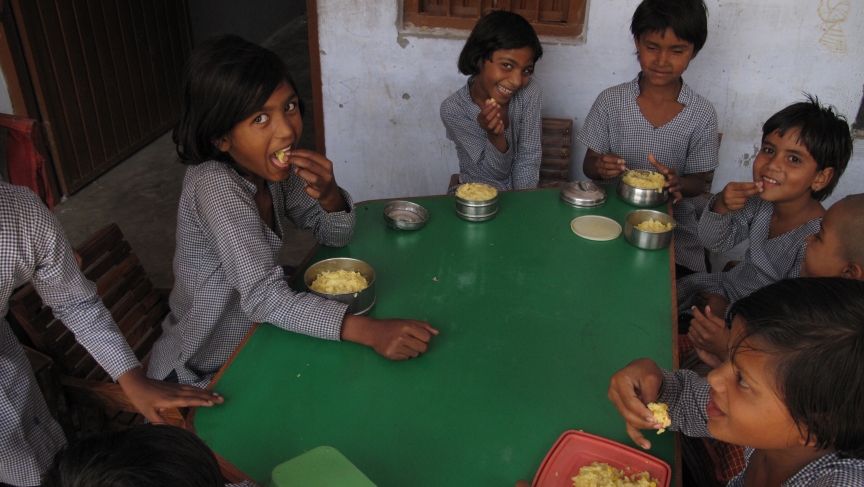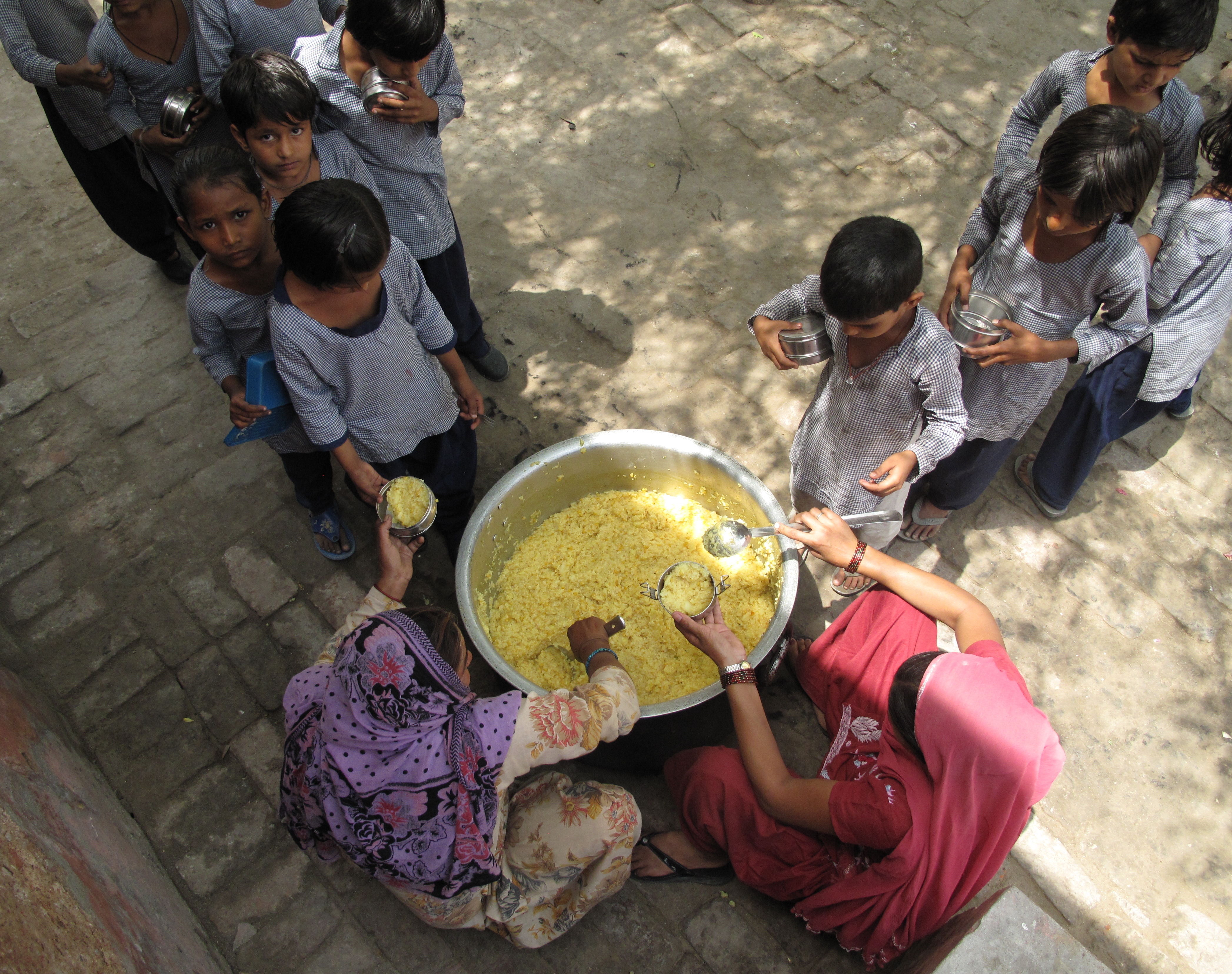
I recently reported on how India's free school lunch program breeds tolerance between castes. But it would be unfair to talk about that without mentioning the other side of the story: The school meal can also be a platform for discrimination against people from lower castes.
As I explained in my story, "traditionally, people in the lower castes did jobs considered unclean, such as tanning leather or cleaning people's homes, even removing sewage." For centuries, people of upper castes have considered those in the lower rungs of the caste system dirty and have therefore refused to share food and drink with them.
Caste-based discrimination is now illegal in India, but it still persists — especially in rural regions. In many places, higher castes still refuse to eat food cooked by lower castes, inter-caste marriage is taboo, and people from upper castes often keep a separate set of utensils to serve food and drink to those from lower castes who might work in their homes or farms.
Discrimination against lower castes during the school lunch program is not well studied. But a 2005 study and one in 2008 by economist Sukhadeo Thorat found "differential treatment" toward lower castes with regard to the mid-day meal in seven of India's poorest states, including Uttar Pradesh, Bihar, Jharkhand and Chattisgarh.
Thorat found a resistance in schools and communities to hire Dalit women as cooks. (Compare that with my story in Haryana, where most of the cooks belonged to lower castes.)
"In 68 percent of the cases, the respondents say that Dalit cooks are not allowed," says Thorat, who is chair of the Indian Council of Social Science Research. And the higher caste women hired as cooks ended up discriminating against Dalit children during the school meal.
"They [the lower caste children] are required to bring their plates," he says. "They are also served from a distance." In other words, the cooks make sure that they or their ladles don't touch the plates of the lower caste children they are serving.
These findings are similar to those of a more recent report by Human Rights Watch titled, "They Say We're Dirty: Denying an Education to India's Marginalized." The investigation looked at various kinds of discriminatory practices in schools, but found some of the discrimination was happening during the free school lunches, especially in Bihar and Uttar Pradesh.
"In schools where we found discrimination persisting, children from these communities often would be served last," says Jayshree Bajoria, South Asia researcher at Human Rights Watch, who led the investigation. "There would also be discrimination in the attitude of the servers who would be serving them."
Here, too, the cooks avoided touching their ladles to the plates of lower caste kids.
"The children would tell me that if, by mistake, their plates touched the ladle with which the food was being served, they would get a scolding," says Bajoria.
The worst case documented by Bajoria was in a village in eastern Uttar Pradesh, against a child from a community considered one of the lowest in the Hindu caste hierarchy.
"One day, this 10-year-old child, really hungry, decided to go ask for food before the others were served, so decided to go at the front of the line," she says. "The cook, in a fit of rage, poured hot stew over his hand. It was a 'don't-you-know-your-place' kind of a reaction. 'You know you have to come after everyone else is served. So, how dare you come and ask for food before everyone else?'"
There's a cost to this kind of discrimination. As in the case above, 22 children from the lower caste eventually dropped out of school because of rampant discrimination, says Bajoria.
"Discrimination is a factor why children from marginalized communities ... are dropping out," says Bajoria. "This unwelcome atmosphere makes them not want to go to school. So there is increased truancy and then they drop out all together."
It is ironic that, on the one hand, India's school lunch program encourages more children from marginalized communities to enroll in school. Where the program works well, it can bring people from different castes together. But in states like Uttar Pradesh and Bihar, where the program becomes a means of further discrimination, children who need education the most are pushed to return to a life of labor and lack of economic opportunities.




